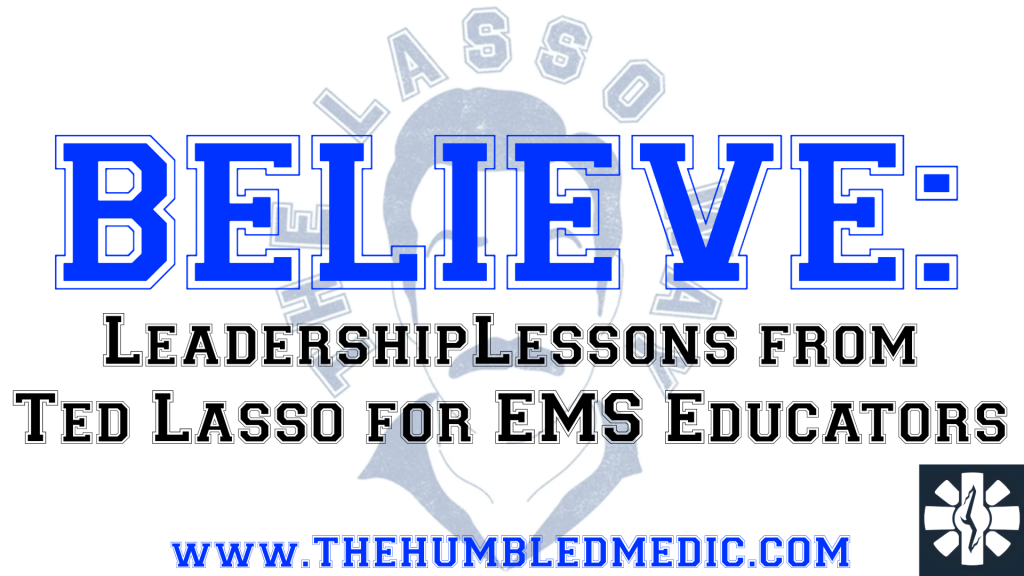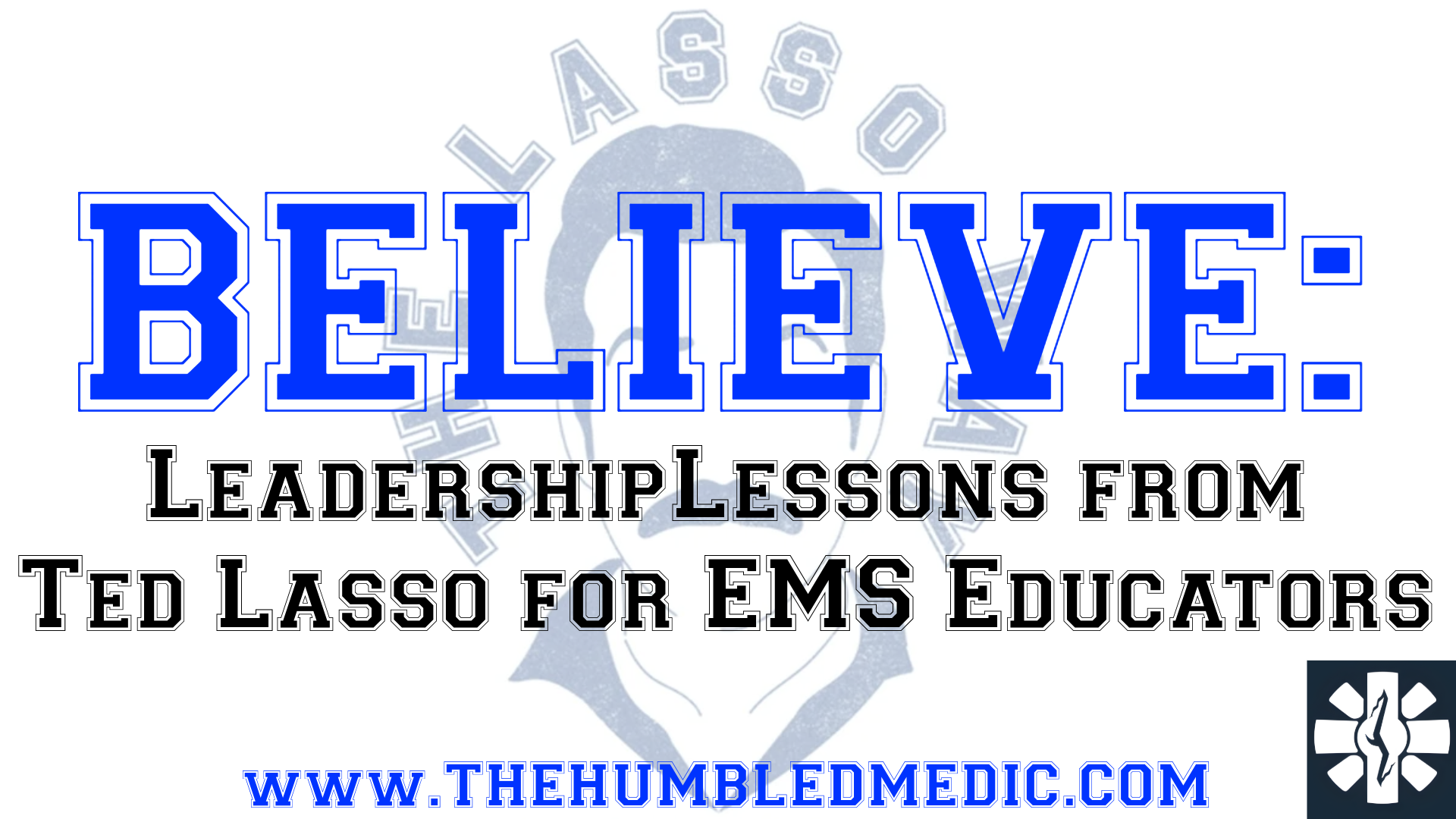
After 20 years of wrestling with stretchers, teaching paramedic students, and trying to keep my cool during the third cardiac arrest of a night shift, I’ve learned that leadership in EMS isn’t just about knowing your protocols or having the fastest intubation time (though that doesn’t hurt). Sometimes, the best leadership lessons come from unexpected places – like a mustachioed American football coach teaching soccer in England.
Yes, I’m talking about Ted Lasso. And before you roll your eyes harder than a medic checking pupils during a suspected overdose, hear me out.
1. “Be Curious, Not Judgmental” – Walt Whitman (via Ted Lasso)
When that frequent flyer calls for the third time this week, or when your student keeps struggling with IV starts, the easy path is judgment. But Ted’s approach – genuine curiosity – changes everything. Instead of sighing and muttering “not again,” try asking why. Maybe that frequent flyer is struggling with a new medication regimen. Maybe your student has a unique learning style you haven’t considered.
I once had a student who kept missing radio reports. Instead of writing them up, I got curious. Turns out they had undiagnosed hearing problems in one ear. A simple radio earpiece solved everything. Being curious literally changed their career trajectory.
2. “Taking on a Challenge is a Lot Like Riding a Horse”
Ted says, “If you’re comfortable while you’re doing it, you’re probably doing it wrong.” Sound familiar? Like when we first introduced mechanical CPR devices, and everyone looked at them like they were alien technology? Change in EMS education is as constant as dispatch dropping a call five minutes before shift end. Embrace the discomfort – it usually means you’re growing.
3. The Diamond Dogs Approach
In the show, the Diamond Dogs are Ted’s informal council of trusted advisors. In EMS education, we need our own version. Create a space where instructors can share challenges, brainstorm solutions, and occasionally vent about that one student who keeps asking about obscure scenarios involving helicopters, submarines, and somehow, always, bees.
4. “Every Choice is a Chance”
Remember that time you let the rookie take lead on a complex call? Your stomach was in knots, but you knew they needed the experience. Ted’s philosophy about giving people chances resonates deeply in EMS education. Every skill station, every scenario, every real patient interaction is a chance for growth – both for the learner and the teacher.
5. The Power of Believe
Ted’s famous “BELIEVE” sign might seem cheesy, but let’s be honest – we’ve all had moments where belief was all we had. Like when you’re teaching a challenging class, and half your students are convinced they’ll never master 12-lead interpretation. Sometimes, believing in them before they believe in themselves is the most powerful teaching tool we have.
6. Biscuits Make Everything Better
Okay, maybe not everything. But Ted’s daily ritual of bringing biscuits reminds us that small gestures matter. Whether it’s bringing coffee for your night shift students, remembering which scenarios challenge which learners, or simply acknowledging when someone’s had a rough shift – these small acts of kindness build the foundation of trust that effective education requires.
7. “Be a Goldfish”
Ted’s advice about having a short memory like a goldfish isn’t about forgetting protocols or patient care standards. It’s about not letting mistakes paralyze us or our students. In EMS, we need to learn from our errors without being defined by them. Debrief, improve, move forward.
The Final Whistle
Leadership in EMS education, like soccer (or football, if Ted’s taught us anything), is a team sport. It’s about building people up, creating a supportive environment, and remembering that behind every protocol, every skill, and every assessment is a human being trying their best.
As Ted would say, “Your body is like day-old rice. If it ain’t warmed up properly, something real bad could happen.” The same goes for leadership – warm up to it, practice it, make mistakes, learn from them, and keep showing up.
Now, if you’ll excuse me, I have some students to believe in and, apparently, some biscuits to bake.
Who is The Humbled Medic: I have been in EMS for two decades, an educator for fifteen years, and occasionally get impostor syndrome when teaching advanced cardiac life support. I believe that humor is the best pressure relief valve (next to actually having working equipment) and that every paramedic has at least one “you won’t believe what happened” story involving both a full moon and a patient’s cat.

